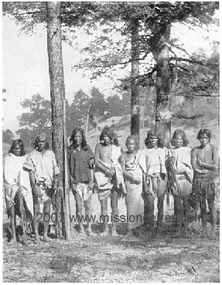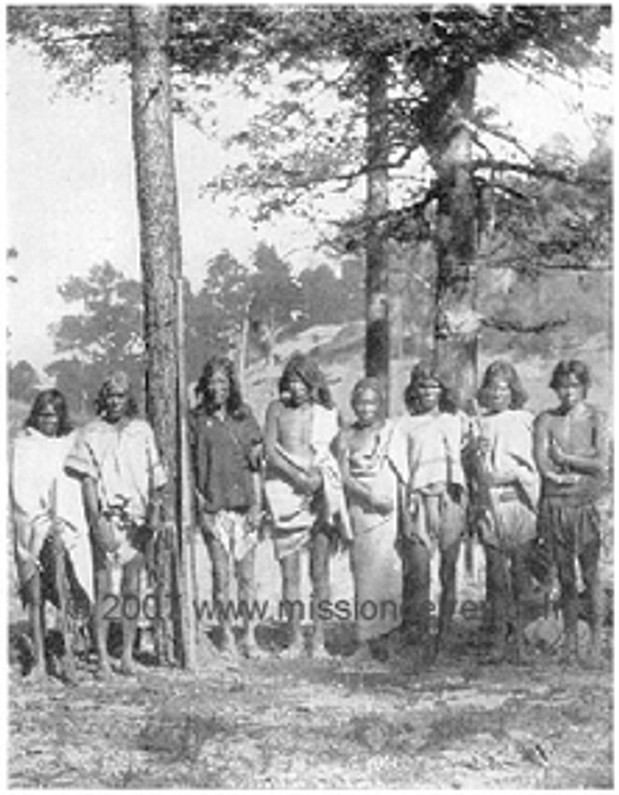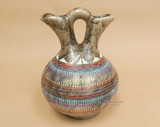Native American Drums - Reaching The Tarahumara Indians
 Native American drums have long been a part of the Tarahumara culture. Reaching the Tarahumara Indians and the Mission Del Rey area to hear their native drums proved quite a challenge early on. The following is an account of one of the first explorers to reach the area in the late 1800's. Photograph circa 1890 Climbing, climbing, climbing, one massive cordon after another, at the start through dense oak thickets, and over hills flattened and eroded with countless deep, precipitous gashes seaming the rock in every direction. Numerous springs oozed and trickled from the stratified conglomerate along the edges, sides, and bottoms of the ravines. The tops of some of these truncated knolls were quite swampy in the depressions, and covered with a thin-stemmed feathery grass.
Native American drums have long been a part of the Tarahumara culture. Reaching the Tarahumara Indians and the Mission Del Rey area to hear their native drums proved quite a challenge early on. The following is an account of one of the first explorers to reach the area in the late 1800's. Photograph circa 1890 Climbing, climbing, climbing, one massive cordon after another, at the start through dense oak thickets, and over hills flattened and eroded with countless deep, precipitous gashes seaming the rock in every direction. Numerous springs oozed and trickled from the stratified conglomerate along the edges, sides, and bottoms of the ravines. The tops of some of these truncated knolls were quite swampy in the depressions, and covered with a thin-stemmed feathery grass.
Here and there was a clump of scrub oaks; sparsely scattered about were small pines. We found great numbers of Opuntia Missouriensis, called by the Mexicans nopal; small mesquite shrubs, too, are seen everywhere, while the resurrection plant covers great areas, like the heather on the Scotch hills. Here are also found century plants, or agaves, and many species of small ferns, such as the graceful maidenhair. In the larger water-courses are poplars and maples, now presenting their most brilliant hues, and carrying the thoughts of the Americans back to their Northern homes.
~The call of the Native American drums seemed to make the Chambers family feel much the same way on their fist assent into the canyon highlands in the late 1900's. Foot paths have given way to dirt roads, but were nearly impassable. Many areas were unable to be reached during the rainy season when dirt turned to deep mud and countless hours were spend digging out. The Native Tarahumara drums we heard on summer nights were much different than that of the Cherokee and more closely resembled the Apach drums from the early days when Geronimo and his band roamed the high plateaus of the barrancas del cobre or copper canyon canyon.~ Thus we advanced for about six miles and made camp, at an elevation of 6,300 feet, on some old trincheras, with a fine view over the vast country we had left below. Large flocks of gray pigeons of remarkable size squatted on the pine trees nearby, and two specimens of the gigantic woodpecker we here observed for the first time. Here, too, Mr. Robinette shot a new species of squirrel, Sciurus Apache. It was large, of a pale grayish-yellow color varied with black, and having a long, full and bushy tail. We had now arrived in the pine region of the sierra.
The Mexican scouts reported that the country ahead of us was still more difficult of access; but the track having been laid out well by Professor Libbey along the pine-covered slopes, we safely arrived at the crest of the sierra, which here has an elevation of 8,200 feet. The steep slopes of the valleys and crevices were covered with slippery pine needles eight to twelve inches long, while the pines rose up to a height of a hundred feet or more. The forest, never touched by a woodman's axe, had a remarkably young and fresh look about it. Native American Drums of the Tarahumara are a prized posession. Today roads exist where once only foot trails existed, but the elusive drums are still sought after. Tarahumara drums used in festivals are hand made Native drums of stretched goat skin rawhide. Tarahuara drums called aro drums, meaning ring drums are used during the Semana Santa festival as a means to call people together from remote mountain areas.
Recent Posts
-
Southwestern Blankets - The Must-Have Summer Staple
Southwest style has been around for years, but has lately been given new life through the popular bo …May 23rd 2022 -
Shop Wedding Vases For The Special Couple
With wedding season just around the corner, chances are you'll be attending the union of two happy p …May 13th 2022 -
Fantastic Beach Finds For Less
As we head into the summer months, you're probably dreaming of lazy days spent on the beach soaking …May 7th 2022




